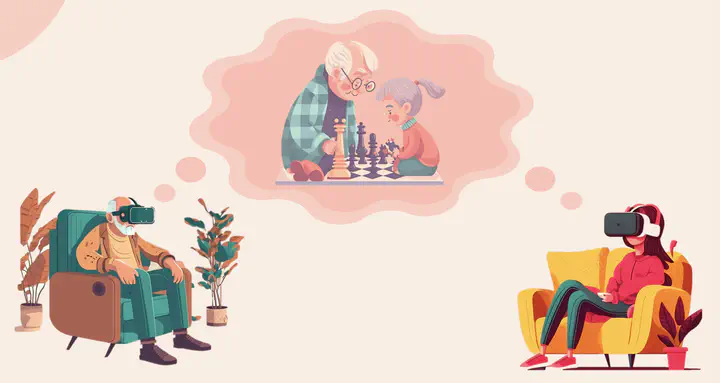Bridging the Generational Gap : Exploring How Virtual Reality Supports Remote Communication Between Grandparents and Grandchildren

Abstract
When living apart, grandparents and grandchildren often use audio-visual communication approaches to stay connected. However, these approaches seldom provide sufcient companionship and intimacy due to a lack of co-presence and spatial interaction, which can be fulflled by immersive virtual reality (VR). To understand how grandparents and grandchildren might leverage VR to facilitate their remote communication and better inform future design, we conducted a user-centered participatory design study with twelve pairs of grandparents and grandchildren. Results show that VR afords casual and equal communication by reducing the generational gap, and promotes conversation by ofering shared activities as bridges for connection. Participants preferred resemblant appearances on avatars for conveying well-being but created ideal selves for gaining playfulness. Based on the results, we contribute eight design implications that inform future VR-based grandparent- grandchild communications.